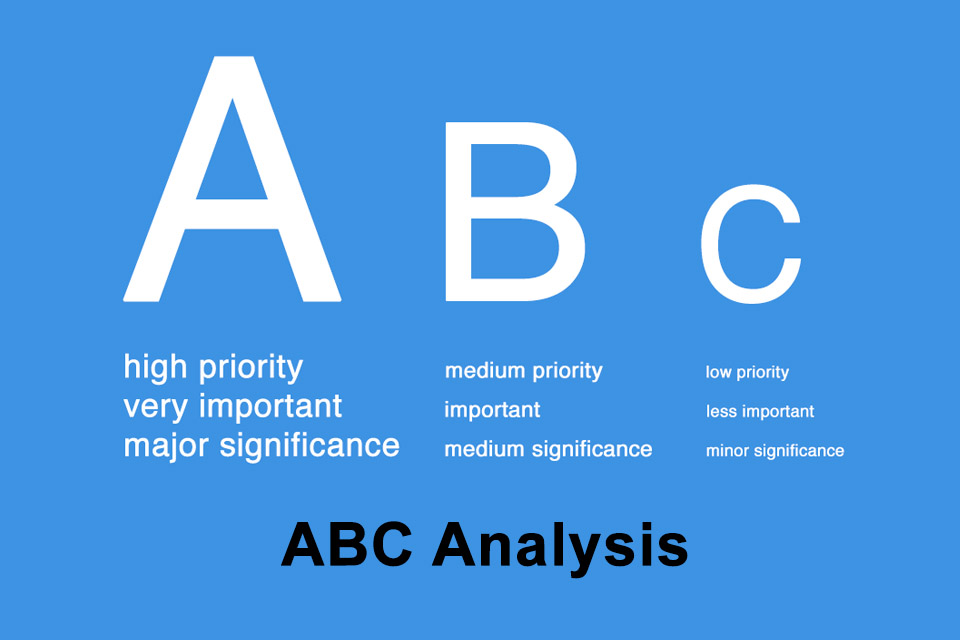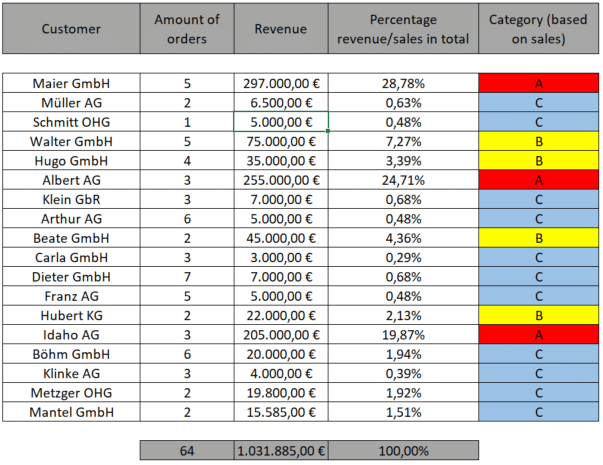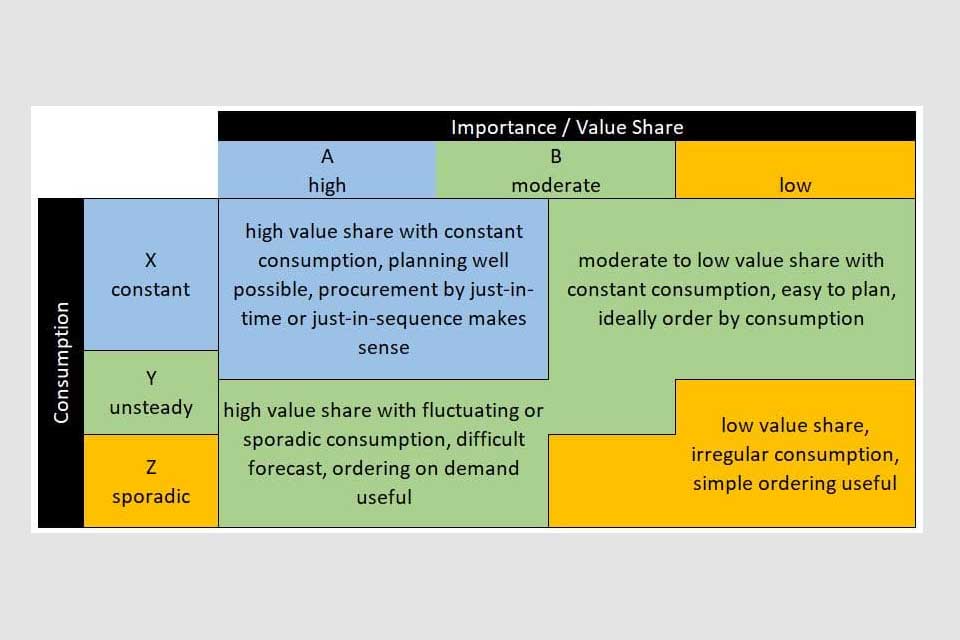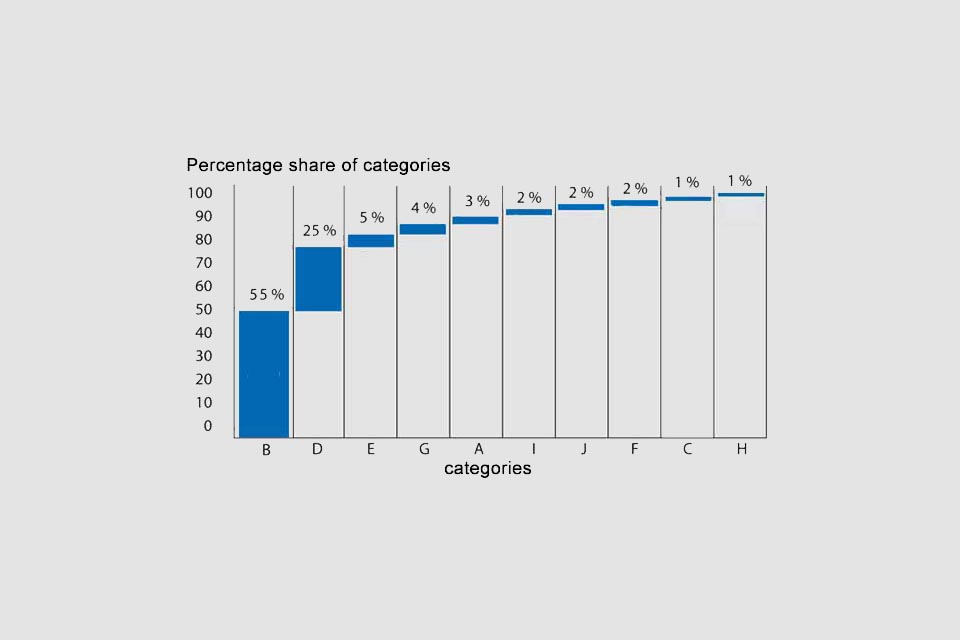What is the ABC Analysis?
Table of Contents: Definition – Levels – Application – Example – Advantages and Disadvantages – Download – Notes
ABC Analysis Definition
ABC analysis is a method or procedure for weighting similar elements according to their priority, importance or significance. How can companies determine which customers are most important? How does an organisation decide which project to implement? And, if applicable, how do you determine which of your tasks you will carry out today? The answer is: prioritisation. A common method of prioritisation is the so-called ABC analysis.
The levels of the ABC Analysis
The ABC analysis has three levels, stages, steps or categories: A, B and C.
- A stands for “high priority”, “very important” or “major significance”.
Example: A project with high priority from which a company hopes to gain strategic advantages. - B stands for “medium priority”, “important” or “medium significance”.
Example: Important customers with whom companies generate revenues and who, if properly looked after, can become very important customers. - C stands for “low priority”, “less important” or “low significance”.
Example: Requirements that could be implemented, but only after the important requirements commissioned by customers have been implemented.
The application of ABC Analysis
The ABC analysis is generally applicable and can be used
- for the prioritisation of work packages in project management,
- in requirements engineering for the evaluation of requirements,
- in sales and distribution in the classification of customers and sales territories,
- in materials management when considering rationalisation,
- in logistics or controlling.
The ABC analysis refers to H. Ford Dickie, a manager at General Electric. The basis of the procedure first described in 1951 is, among other things, the 80-20 Rule, also known as the Pareto principle. The rule states that 80% of the results can be achieved with 20% of the total expenditure, while for the remaining 20% of the results 80% of the total expenditure must be invested. As a result, the ABC analysis attempts to separate the essential from the insignificant. This can be recognised graphically in a Pareto Chart.
An example of ABC Analysis
For example, if a company achieves 80% of its total turnover with 20% of its customers, these are A-customers; they enjoy the greatest importance for the company.
If another 30% of the customers contribute to 15% of the total turnover, then these customers are assigned to class B with a medium importance.
Accordingly, the allocation of the remaining 50% of customers to Class C is less significant because they account for only 5% of sales.
Advantages and disadvantages of ABC Analysis
ABC analysis offers the following advantages:
- It is easy to apply and independent of the object of investigation, e.g. it could also help in the assessment of risks in project management or in a sales potential analysis.
- It enables the analysis of complex situations with justifiable effort by limiting it to essential factors.
- The results of the analysis can be presented clearly and graphically.
The following disadvantages are attributed to the ABC analysis:
- The three classes are often too rough, so that further classifications (ABCD or ABCDE) become necessary, whereby this contradicts the desired reduction at complexity.
- Usually only individual criteria are used for classification, e.g. turnover per customer. Customers could be very interesting with corresponding sales potential, but also with currently lower sales figures. In practice, such a blending makes it possible, for example, to simultaneously support existing customers, who can be categorised according to their sales, and to acquire new customers, who would fall through the raster if only sales were considered.
- In contrast to quantitative factors, qualitative factors are usually not considered (sales of a customer versus image of the customer).
Some publications point out that the method does not provide recommendations for action. This is of course true, but it is neither an advantage nor a disadvantage, but merely the consequence of the advantage that it can be used in many areas.
Impulse to discuss:
In order for the ABC analysis to work, it is important to use other procedures beforehand in which criteria to be defined are collected, evaluated and weighted. Without these additional procedures, ABC analysis will not work.
Notes:
If you like the article or would like to discuss it, please feel free to share it in your network. And if you have any comments, please do not hesitate to send us a message.
Basically, the result of an ABC analysis is always a snapshot; the results should therefore be checked at regular intervals. In general only one criterion of the evaluation is concentrated, the use of further analysis procedures could be meaningful. In materials management, for example, it is combined with XYZ analysis.
In sales there is also the term ABC; it stands for “Always Be Closing”. It is a sales strategy based on the idea that every step a salesperson takes during the sales process is aimed at closing a sale.
Here you can find a nice explanatory video on ABC analysis in German.
Here you can find an article about the Delete strategy: Relief instead of overload.
And here you will find additional information from our Smartpedia section:





